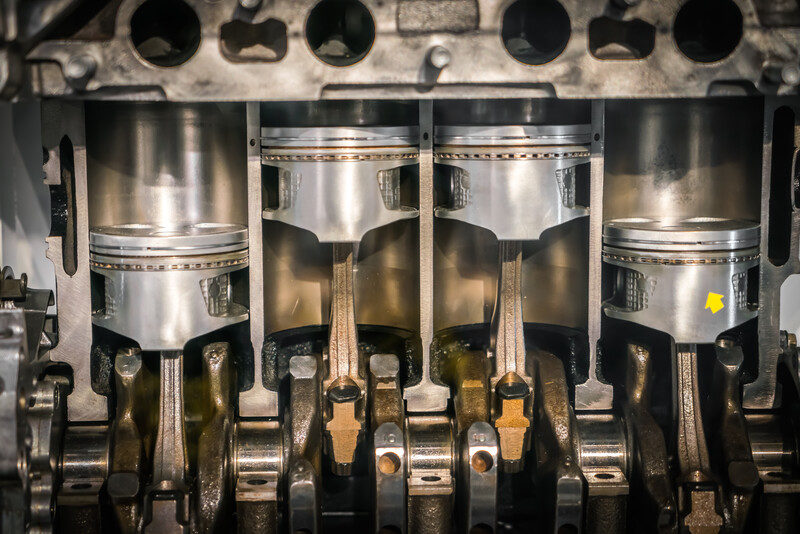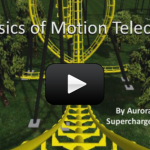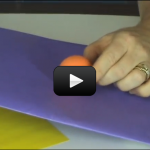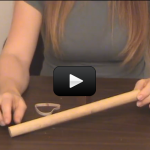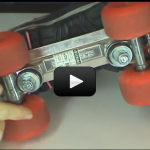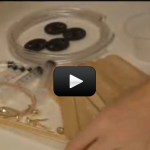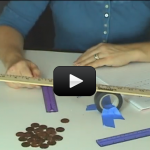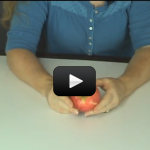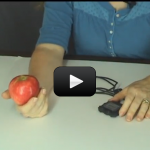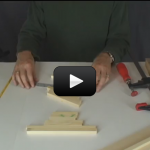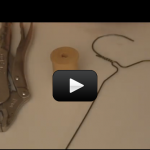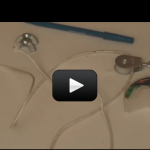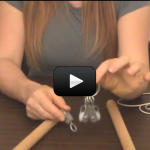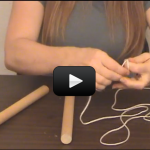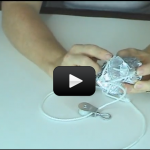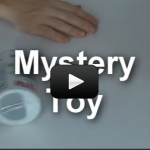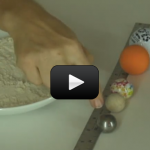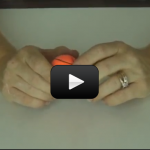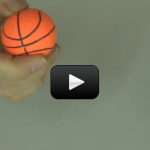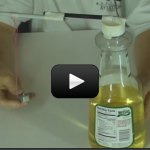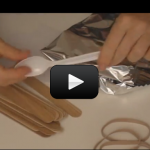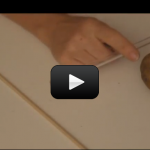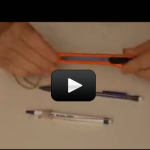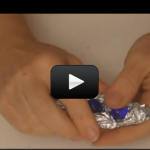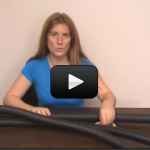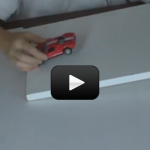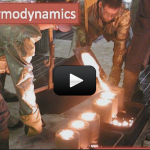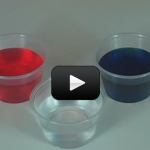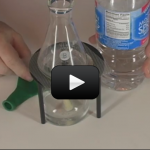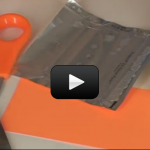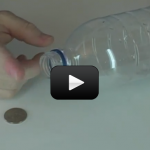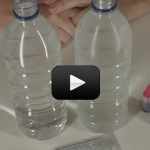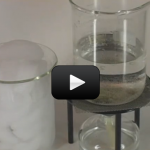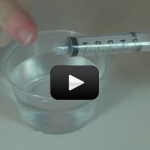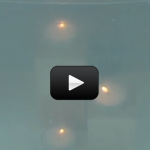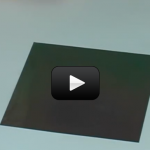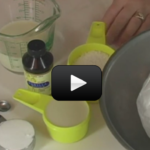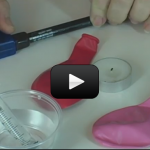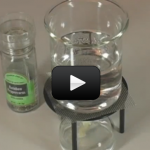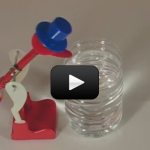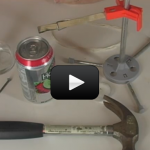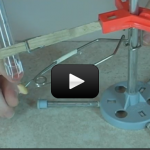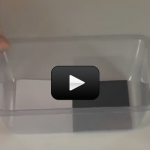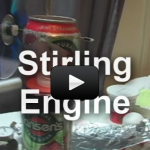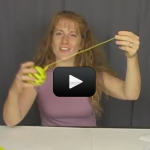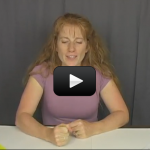Special Science Teleclass: Physics of Motion
Physics of Motion Intro Class This is a recording of a recent live teleclass I did with thousands of kids from all over the world. I've included it here so you can participate and learn, too! We're going to cover energy and motion by building roller coasters and catapults! Kids build a working catapult while … Continue reading "Special Science Teleclass: Physics of Motion" |
Inclined Plane
What's an inclined plane? Jar lids, spiral staircases, light bulbs, and key rings. These are all examples of inclined planes that wind around themselves. Some inclined planes are used to lower and raise things (like a jack or ramp), but they can also used to hold objects together (like jar lids or light bulb threads). |
First, Second, and Third Class Levers
Levers, being simple machines, have only three simple parts. The load, the effort, and the fulcrum. Let’s start with the load. The load is basically what it is you’re trying to lift. The books in the last experiment where the load. |
Roller Skate Belts
This isn't strictly a 'levers' experiment, but it's still a cool demonstration about simple machines, specifically how pulleys are connected with belts. Take a rubber band and a roller skate (not in-line skates, but the old-fashioned kind with a wheel at each corner.) |
Hydraulic Pneumatic Earth Mover
When people mention the word “hydraulics”, they could be talking about pumps, turbines, hydropower, erosion, or river channel flow. The term “hydraulics” means using fluid power, and deals with machines and devices that use liquids to move, lift, drive, and shove things around. |
The SeeSaw
We're going to use everyday objects to build a simple machine and learn how to take data. Sadly, most college students have trouble with these simple steps, so we're getting you a head start here. The most complex science experiments all have these same steps that we're about to do... |
What’s a Joule?
This experiment is for students Grades 9-12. We're going to really get a good feel for energy and power as it shows up in real life. For this experiment.. |
Measuring Power
We're going to practice measuring and calculating real life stuff (because science isn't just in a textbook, is it?) When I taught engineering classes, most students had never analyzed real bridges or tools before - they only worked from the textbook. |
Trebuchet
For ages, people have been hurling rocks, sticks, and other objects through the air. The trebuchet came around during the Middle Ages as a way to break through the massive defenses of castles and cities. It's basically a gigantic sling that uses a lever arm to quickly speed up the rocks before letting go. |
Homemade Pulleys
These homemade pulleys work great as long as they glide freely over the coat hanger wire (meaning that if you give them a spin, they keep spinning for a few more seconds). You can adjust the amount of friction in the pulley by adjusting the where the metal wire bends after it emerges from the pulley. |
Return-Mechanism Pulley System
Silly as our application for this experiment may sound, we use this system to keep pens handy near the shopping list on the fridge. It’s saved us from many pen-searches over the years! |
Block & Tackle
Simple machines make our lives easier. They make it easier to lift, move and build things. Chances are that you use simple machines more than you think. If you have ever screwed in a light bulb, put the lid on a jam jar, put keys on a keychain, pierced food with a fork, walked up a ramp, or propped open a door |
Pull Two Friends with One Hand
We're going to be using pulleys to pull two (or more) kids with one hand. You will be using something called ‘Mechanical Advantage’, which is like using your brains instead of brute strength. |
Simple Pulley Experiments
Are you curious about pulleys? This set of experiments will give you a good taste of what pulleys are, how to thread them up, and how you can use them to lift heavy things. |
Mystery Toy
first, and when you're done with the heavy nut from that activity, just use it in this experiment. You can easily create one of these mystery toys out of an old baking powder can, a heavy rock, two paper clips, and a rubber band (at least 3" x 1/4"). It will keep small kids and cats busy for hours. |
Whackapow!
In this experiment, you're looking for two different things: first you'll be dropping objects and making craters in a bowl of flour to see how energy is transformed from potential to kinetic, but you'll also note that no matter how carefully you do the experiment |
Ball Bounce
When you toss down a ball, gravity pulls on the ball as it falls (creating kinetic energy) until it smacks the pavement, converting it back to potential energy as it bounces up again. This cycles between kinetic and potential energy as long as the ball continues to bounce.
|
Elastic Potential Energy
There are many different kinds of potential energy. We've already worked with gravitational potential energy, so let's take a look at elastic potential energy. |
Pendulums
This is a very simple yet powerful demonstration that shows how potential energy and kinetic energy transfer from one to the other and back again, over and over. Once you wrap your head around this concept, you'll be well on your way to designing world-class roller coasters. |
Catapults
When you drop a ball, it falls 16 feet the first second you release it. If you throw the ball horizontally, it will also fall 16 feet in the first second, even though it is moving horizontally… it moves both away from you and down toward the ground. |
Potato Cannon
This experiment is for kids Grades 9-12.There are several different ways of throwing objects. This is the only potato cannon we've found that does NOT use explosives, so you can be assured your kid will still have their face attached at the end of the day. |
P-Shooters
This is a simple, fun, and sneaky way of throwing tiny objects. It's from one of our spy-kit projects. Just remember, keep it under-cover. Here's what you need: |
Bobsleds
Bobsleds use the low-friction surface of ice to coast downhill at ridiculous speeds. You start at the top of a high hill (with loads of potential energy) then slide down a icy hill til you transform all that potential energy into kinetic energy. |
Roller Coasters
We're going to build monster roller coasters in your house using just a couple of simple materials. You might have heard how energy cannot be created or destroyed |
Go Go GO!!
This is a nit-picky experiment that focuses on the energy transfer of rolling cars. You'll be placing objects and moving them about to gather information about the potential and kinetic energy. |
Special Science Teleclass: Thermodynamics
This is a recording of a recent live teleclass I did with thousands of kids from all over the world. I’ve included it here so you can participate and learn, too! You’ll discover how to boil water at room temperature, heat up ice to freeze it, make a fire water balloon, and build a real … Continue reading "Special Science Teleclass: Thermodynamics" |
Sensing Temperature
Temperature is a way of talking about, measuring, and comparing the thermal energy of objects. |
Balloon Gymnastics
Is it warmer upstairs or downstairs? If you’re thinking warm air rises, then it’s got to be upstairs, right? If you’ve ever stood on a ladder inside your house and compared it to the temperature under the table, you’ve probably felt a difference. So why is it cold on the mountain and warm in the … Continue reading "Balloon Gymnastics" |
Homemade Thermostat
If you can remember thermostats before they went ‘digital’, then you may know about bi-metallic strips – a piece of material made from of two strips of different metals which expand at different rates as they are heated (usually steel and copper). The result is that the flat strip bends one way if heated, and … Continue reading "Homemade Thermostat" |
Ghost Coin
This spooky idea takes almost no time, requires a dime and a bottle, and has the potential for creating quite a stir in your next magic show. The idea is basically this: when you place a coin on a bottle, it starts dancing around. But there’s more to this trick than meets the scientist’s eye. … Continue reading "Ghost Coin" |
Food Dye Currents
When something feels hot to you, the molecules in that something are moving very fast. When something feels cool to you, the molecules in that object aren’t moving quite so fast. Believe it or not, your body perceives how fast molecules are moving by how hot or cold something feels. Your body has a variety … Continue reading "Food Dye Currents" |
Making Clouds
Indoor Rain Clouds Making indoor rain clouds demonstrates the idea of temperature, the measure of how hot or cold something is. Here’s how to do it: Take two clear glasses that fit snugly together when stacked. (Cylindrical glasses with straight sides work well.) Fill one glass half-full with ice water and the other half-full with … Continue reading "Making Clouds" |
Boiling Room Temperature Water
The triple point is where a molecule can be in all three states of matter at the exact same time, all in equilibrium. Imagine having a glass of liquid water happily together with both ice cubes and steam bubbles inside, forever! The ice would never melt, the liquid water would remain the same temperature, and … Continue reading "Boiling Room Temperature Water" |
Stairstep Candles
Fire is a chemical reaction (combustion) involving hot gases and plasma. The three things you need for a flame are oxygen, fuel, and a spark. When the fuel (gaseous wax) and oxygen (from the air) combine in a flame, one of the gases produced is carbon dioxide. Most people think of carbon dioxide as dry … Continue reading "Stairstep Candles" |
Liquid Crystals
If you’ve completed the Soaking Up Rays experiment, you might still be a bit baffled as to why there’s a difference between black and white. Here’s a great way to actually “see” radiation by using liquid crystal thermal sheets. You’ll need to find a liquid crystal sheet that has a temperature range near body temperature … Continue reading "Liquid Crystals" |
Football Ice Cream
Is it hot where you live in the summer? What if I gave you a recipe for making ice cream that doesn’t require an expensive ice cream maker, hours of churning, and can be made to any flavor you can dream up? (Even dairy-free if needed?) If you’ve got a backyard full of busy kids … Continue reading "Football Ice Cream" |
Fire-Water Balloon
If you’ve ever had a shot, you know how cold your arm feels when the nurse swipes it with a pad of alcohol. What happened there? Well, alcohol is a liquid with a fairly low boiling point. In other words, it goes from liquid to gas at a fairly low temperature. The heat from your … Continue reading "Fire-Water Balloon" |
Convection Currents
Every time I’m served a hot bowl of soup or a cup of coffee with cream I love to sit and watch the convection currents. You may look a little silly staring at your soup but give it a try sometime! Convection is a little more difficult to understand than conduction. Heat is transferred by … Continue reading "Convection Currents" |
Solar Drinking Bird
The Drinking Bird is a classic science toy that dips its head up and down into a glass of water. It’s filled with a liquid called methylene chloride, and the head is covered with red felt that gets wet when it drinks. But how does it work? Is it perpetual motion? Let’s take a look … Continue reading "Solar Drinking Bird" |
Hero Engine
There are lots of different kids of heat engines, from stirling engines to big jet turbines to the engine in your car. They all use clever ways to convert a temperature difference into motion. Remember that the molecules in steam move around a lot faster than in an ice cube. So when we stick hot … Continue reading "Hero Engine" |
Peanut Energy
This experiment is for advanced students. Did you know that eating a single peanut will power your brain for 30 minutes? The energy in a peanut also produces a large amount of energy when burned in a flame, which can be used to boil water and measure energy. Peanuts are part of the bean family, … Continue reading "Peanut Energy" |
Soaking Up Rays
Heat is transferred by radiation through electromagnetic waves. Remember, when we talked about waves and energy? Well, heat can be transferred by electromagnetic waves. Energy is vibrating particles that can move by waves over distances right? Well, if those vibrating particles hit something and cause those particles to vibrate (causing them to move faster/increasing their … Continue reading "Soaking Up Rays" |
Stirling Engine
This project is for advanced students.This Stirling Engine project is a very advanced project that requires skill, patience, and troubleshooting persistence in order to work right. Find yourself a seasoned Do-It-Yourself type of adult (someone who loves to fix things or tinker in the garage) before you start working on this project, or you’ll go … Continue reading "Stirling Engine" |
First Law of Thermodynamics
First Law of Thermodynamics: Energy is conserved. Energy is the ability to do work. Work is moving something against a force over a distance. Force is a push or a pull, like pulling a wagon or pushing a car. Energy cannot be created or destroyed, but can be transformed. Materials: ball, string |
Second Law of Thermodynamics
Second Law of Thermodynamics: Heat flows from hot to cold. Heat is the movement of thermal energy from one object to another. Heat can only flow from an object of a higher temperature to an object of a lower temperature. Heat can be transferred from one object to another through conduction, convection and radiation. Temperature … Continue reading "Second Law of Thermodynamics" |

